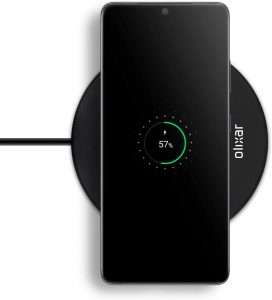Traditionally, manufacturers use technology solutions like SCADA or EAM applications or RFID/Barcode or GPS solutions to track assets. Although these are technology solutions, they work discretely and are controlled by different stakeholders.
Every Manufacturer Should Care About IoT Asset Management
With the technical data collected by different stakeholders for different purposes, having a centralized data repository for assets for making accurate and smart decisions is still a million-dollar question to manufacturing heads.
There are many hurdles if you operate within old-school protocols
These old-school ways of managing assets pose many hurdles to manufacturing staff, especially when it comes to labor-intensive tasks like visual inspections, handwritten lists, equipment location tracking, etc.
The lack of visibility throughout the process of figuring out equipment defects, missing materials, bottlenecks, etc., leads to inaccurate decision making and dissatisfied customers.
The problem can be approached in two ways
- Making asset management simple and easy
- Gaining complete visibility and control over entire asset management activities
Legacy systems are due to be updated.
With the legacy systems failing to live up to the expectations, it is always a must to try new ways to make the asset management process simple, effective and efficient.
One of the new ways top manufacturers have leveraged today is investing in the Internet of Things and partnering with a reliable IoT app development company for tracking and managing assets.
IoT has come a long way and almost 70% of industries of different verticals have started to realize its impact. Many studies have apparently revealed that IoT addition to their existing processes has contributed to rapid growth and improved operations.
Understanding the importance of asset tracking in Manufacturing
Asset Tracking Market was valued at USD 17.14 billion in 2020 and is expected to reach USD 34.82 billion by 2026 at a CAGR of 13.45% during the forecast period 2021 – 2026. Given the high price of enterprise and industrial assets, especially fleet equipment, the need for monitoring and tracking these assets is paramount. (Source: Mordor Intelligence)
The role of IoT in asset tracking and management in manufacturing
IoT Smart Asset Management solution typically comprises the following:
- Asset Health/Condition Monitoring
- Predictive Asset Maintenance
- Asset Lifecycle Management
- Remote Asset Tracking
- Asset Workflow Automation
Benefits of IoT-based Asset Management
Here are the top 6 benefits of IoT-enabled asset management systems for manufacturers.
- Increased speed and efficiency of the inventory process, optimized cost.
- Improved transfer of the assets along the supply chain.
- Real-time tracking of asset status, condition and positioning.
- Eliminated human errors in automated, data-intensive asset management.
- Enhanced authentication and security.
- Prompt and effortless access to the assets.
Applications of IoT in asset management
- Theft prevention
- Condition monitoring
- Location tracking
- Utilization monitoring
- Asset maintenance
Let’s get started with applications of IoT in asset management.
IoT for theft prevention
Loss of assets or misplaced assets is often challenging for manufacturing staff. Missing assets not only consumes a lot of time of staff but also increases the overall cost associated with assets procurement. With traditional techniques failing to prevent loss or missing assets, manufacturing heads are now turning towards IoT as the technology is powerful enough to manage assets effectively.
Here are 4 ways you can prevent theft and loss using IoT.
Beacons
The Beacon-embedded IoT devices play a critical role in the tracking and managing of assets. For example, with such a system, any event or incident about moving or removing an asset from a location can be easily shared with respective staff or supervisors, or managers. Once such an event occurs, an alert message is triggered, and the respective person or team will be warned through the smartphones to take the necessary actions.
Smart tags with sensors
The combination of smart tags with Bluetooth Low Energy (BLE) sensors and IoT can dramatically reduce any fraudulent activity within the warehouse of the inventory or other parts. Furthermore, the movement of any asset will immediately be captured and notified to the corresponding authority to prevent the loss or missing of assets.
Geofencing
also known as a geographical fence created using app developers, it creates a barrier in specific locations where vehicles, products and people need to be monitored. Whenever someone or something breaks the barrier, an immediate warning would be passed to the person to take the necessary actions. With such a system, looting goods from one location to another without any prior permission is completely denied.
Open notification
An interesting technique to prevent fraudulent activities with packing and loading. The IoT devices embedded in packages help the staff with alerts when someone opens the package to loot any valuable asset. Mostly they are used in shipping containers to prevent asset theft during the transition of assets.
IoT for condition monitoring
Condition monitoring is all about monitoring and tracking the conditions of equipment, machinery, tools, or any asset. This technique is extremely critical to measure the condition of assets that are transported from one location to another, especially in chemical engineering.
The same can be applied to machinery that is working continuously. IoT-based condition-based monitoring is important for manufacturers because there are places where staff can’t manually perform a check on the asset conditions.
With IoT based condition monitoring, manufacturers can achieve
- Improved asset performance
- Increased asset visibility
- Improved workplace safety
- Instant alerts on asset conditions
- Predictive maintenance of assets
- Extended asset life
IoT for location tracking
Tracking assets within a warehouse or inventory or from any part of the project zone is challenging for manufacturers. In addition, loss or misplaced assets contribute to higher costs and impacts customer experience due to delayed shipping.
Performing this task manually consumes a lot of time and incurs human errors. However, with an IoT-enabled asset location tracking system, the problem can be largely simplified.
The huge advantage of IoT over RFID-based location tracking systems is that IoT provides real-time location of assets and at the same time uses any tracking options available like GPS, Wifi, or cellular networks to perform the task.
Some of the benefits of IoT asset location tracking systems are
- Minimal human intervention and errors
- Faster actions based on real-time data
- Optimized asset utilization and space
- Proactive supply chain
IoT for utilization monitoring
Often many assets are under-utilized in project zones as they haven’t been used for long. Therefore, continuous monitoring of such assets matters and this can be a labor-intensive process.
In addition to time spent on monitoring assets, not using them to the fullest can cost the business an arm and a leg. An IoT asset management system simplifies the laborious tasks and helps staff to save a significant amount of time, and cost for the manufacturers.
Here are some of the benefits of using assets to the fullest with IoT asset management.
- Monitor assets continuously
- Track asset health
- Locate and use assets wisely
- Reduce asset procurement cost
- Reduce asset waste
IoT for asset maintenance
Maintaining asset health with regular maintenance is important, and manufacturers spend one-third of their money on this process. Therefore, ensuring the assets are in good condition is important for manufacturing success.
Manual asset maintenance systems are often expensive as humans won’t have any clue what’s happening inside the machines when they are operating and avoiding a machine failure during critical production levels is possible.
To overcome this, IoT-based predictive maintenance systems are used in manufacturing premises.
With a predictive maintenance system, monitoring the health of assets is simple and effortless. IoT implemented on the machines or assets provides real-time data on assets’ health status, which is then fed in a predictive maintenance system to foresee asset failure or downtime. In this way, manufacturers can cut down costs on regular maintenance and can service only the machines that require maintenance. This saves manufacturers from unexpected cost, downtime and hindered production.
Here are the benefits of IoT-predictive maintenance systems
- Reduce costs by 12%
- Improve uptime by 9%
- Reduce safety, health, environmental, and quality risks by 14%
- Extend the lifetime of an aging asset by 20%
Summary
From the above discussion, it is apparent that manufacturers should care about IoT asset management as this could not only save theirs and staff’s time but also helps a great deal in reducing the overall asset-related cost.
If you haven’t invested in any asset management system, better try one now, as this could reduce your asset-related woes and help you save time, money in addition to helping with insights for healthier decisions.






